Barrier ammunition: search, capture, destruction
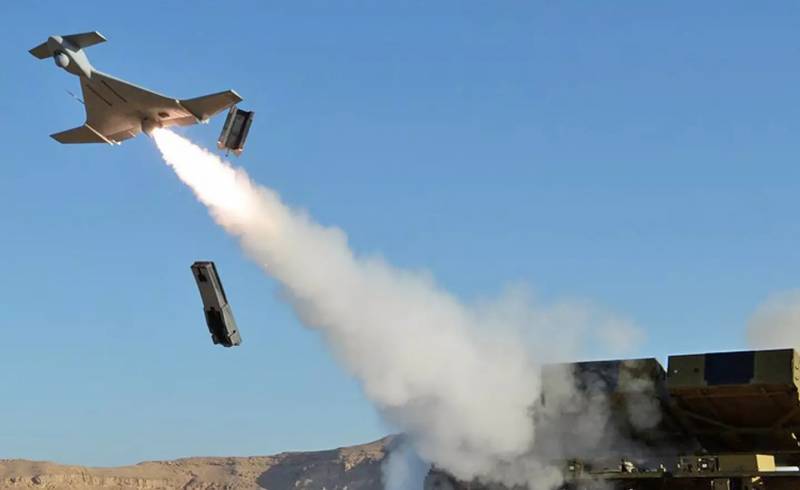
Looking around the corner has always been the dream of any fighter, as it allows him to learn more about a potential threat. The "corner" can be close or far, and the threat can be of a very different nature, such as static or moving. Today, unmanned aerial vehicles, also called drones, are a typical means of looking beyond the horizon. Some of them are even able to strike thanks to weapons mounted under the wings, such as rockets of various types and sizes. Integrating a warhead into a drone in order to get something that looks like a missile, but is able to fly long enough over the target before attacking, actually conducting long-term surveillance, has led to the emergence of the so-called "loitering ammunition". The effectiveness of their strikes against moving targets is quite high, since the operator can remotely decide when and which target to attack, thereby achieving almost one hundred percent defeat.
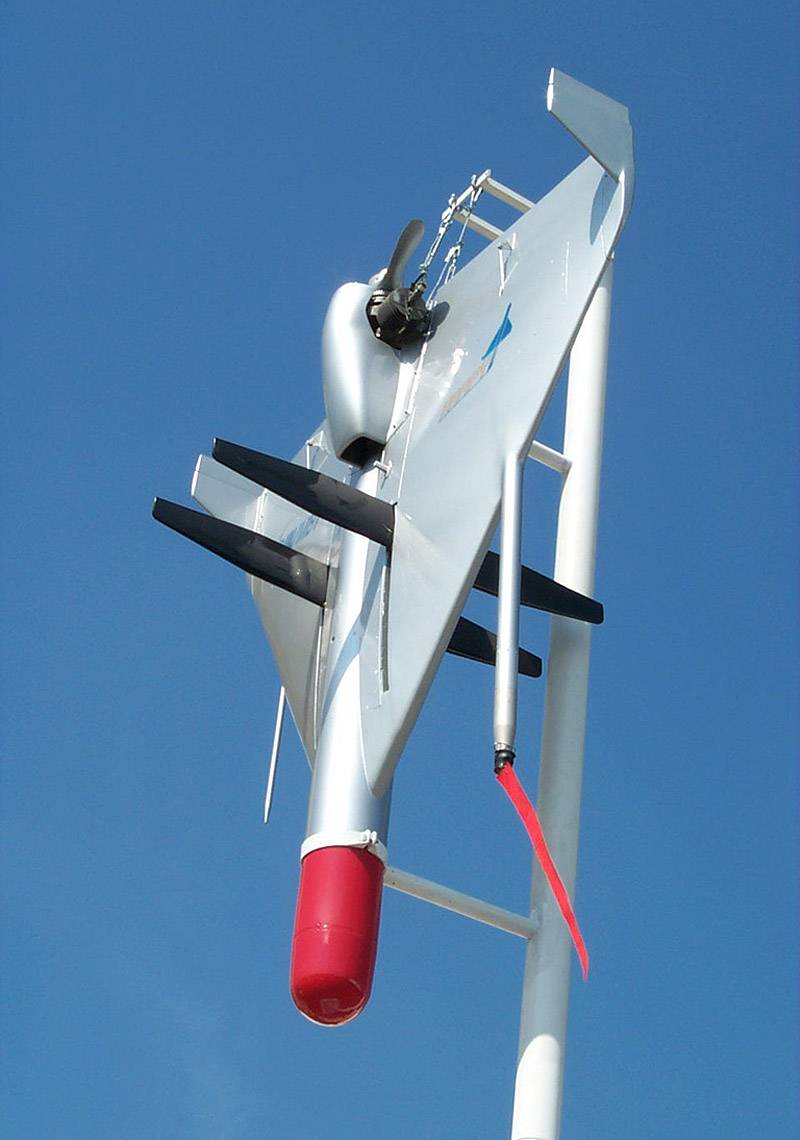
One of the first systems developed in the mid-80's by the Israeli company Israel Aerospace Industries was named Harpy. This weapon system to suppress enemy air defense (English, SEAD - Suppression of Enemy Air Defenses) has reduced the number of combat aircraft performing such tasks, and, as a result, the risk of being shot down by enemy ground-to-air missiles. An 2,7 meter long deltoid wing apparatus with a 2,1 meter span is equipped with a WELCEL engine UEL AR731 with a power of 38 hp, a rotary pushing screw located in the rear, and 32 kg of explosive is placed in the front compartment. The device launched from the container flies at cruise speed (maximum speed 185 km / h) to the target area (maximum flight range 400-500 km), where it can circle for a couple of hours, choosing a target. The receivers of a fully autonomous apparatus allow you to catch the signals of the control station and direct it to the target. Advanced algorithms are integrated into the homing system, providing a high level of autonomy. At the end of the 2000, IAI, based on its experience with the Harpy project, developed the Nagor apparatus, which integrated the optoelectronic target load and data transmission channel, which introduced an operator into the control loop. The main objective of this unit remains SEAD, although it can be used for other types of purposes. The wingspan increased to 3 meters, and the length to 2,5 meters, the weight of the warhead was reduced to 23 kg, and the range was increased to 1000 km. The newest member of the family is the Harpy NG system, for which the case of the Nagor apparatus was taken. It is equipped with a digital homing head (GOS), covering a wider frequency band of 0,8-18 GHz compared to 2-18 GHz of previous models. Take-off weight is 160 kg, flight duration is about 10 hours. The Harpy / Nagor family is in service with the Israeli army and about 8 countries.
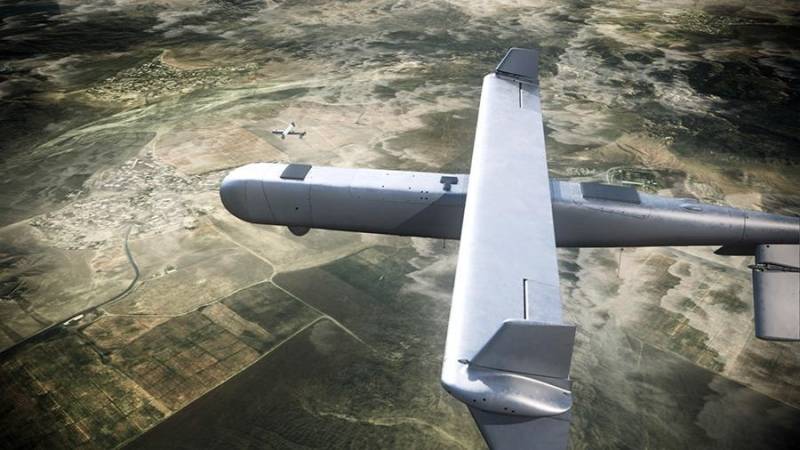
At the end of the 2000's, IAI turned its attention to the tactical sphere and developed smaller ammunition barracks with a smaller radius of action. Green Dragon ME (M - medium size, E - electric) is capable of performing SEAD tasks thanks to the 1-4 GHz radio frequency seeker, the optoelectronic seeker and the communication channel. Glider of traditional design with an inverted V-shaped tail; a station for reconnaissance intelligence is installed in the lower tail of the fuselage. With a maximum take-off weight of about 40 kg, 7-8 kg is assigned to combat equipment. The range of Green Dragon ME is about 50 km, and the time spent in the air is about 90 minutes. The smaller Green Dragon ammunition is equipped with an optoelectronic seeker only. The device without a launch container weighs 15 kg, has a length of 1,6 meters, when deployed, the wingspan is 1,7 meters; it can reach a maximum speed of up to 110 nodes, the patrol speed is 65-85 nodes, flight duration 75 minutes and flight range 40 km. It is equipped with a universal warhead weighing 2,5 kg, which is effective against manpower and armored vehicles. All devices of the family are stacked in a launch container with a length of 2 meters, a diameter of 0,3 meters and a weight of 25 kg. The device leaves it thanks to the pulse engine, then the electric motor is turned on and it flies to the target area on its own. The presence of an operator allows you to interrupt the execution of a task or to start an attack anew; attack methods vary from small to almost vertical angles. Both versions of Green Dragon are fully finished contracts.
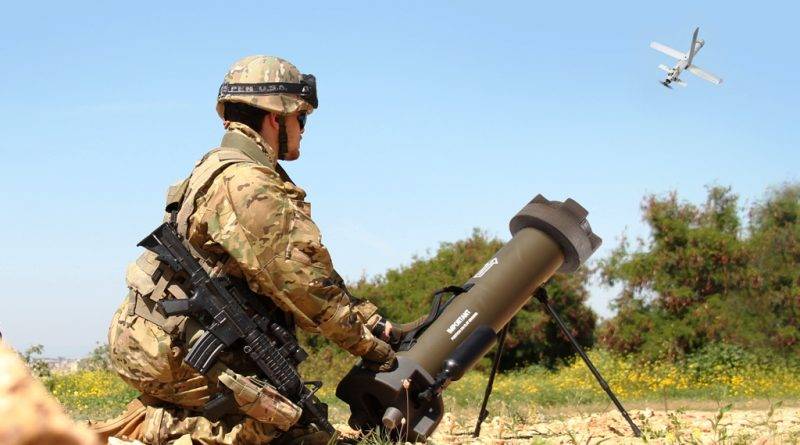
To further reduce the weight of its products, IAI developed the Rotem 1200 model, the number indicates the mass in grams of warhead, which in this case consists of two M-67 hand grenades. The quadcopter weighs 5,8 kg, the optoelectronic load on the three-axis gyro-stabilized suspension is installed in the front of the fuselage. The whole complex consists of two devices, a ground control station in the form of a tablet, in which a communication center is built-in; the weight of the whole set is 16,7 kg. Instead of a container with combat equipment, a container with a special reconnaissance microstation can be installed in the Rotem 1200; optionally, radio reconnaissance equipment or fire detection sensors can also be installed. The flight range is 10 km, the working altitude is 300 meters, the flight duration is 30 minutes with combat equipment and 45 minutes with a view reconnaissance container, the attack accuracy is less than one meter. The smaller system, known as the Rotem 500, can carry one hand grenade. Both Rotem variants are the only returnable devices in the IAI's range of barricading ammunition. The Rotem 1200 variant is already in operation, and the Rotem 500 is ready for sale. When asked about the "swarm capabilities" of these devices, the IAI representative said that he did not comment on this.
Israeli company UVision is perhaps the only one of the existing companies engaged exclusively in barrage of ammunition. She has developed a family of HERO systems, ranging from tactical, operational, and to strategic models. Her catalog contains 7 systems, although it is clear that only a part of them are truly embodied in serial samples. “At the moment, we have focused on sales of three products - HERO-30, HERO-120 and HERO-400,” the company representative said, emphasizing that the HERO-900 option so far exists only on paper. This option is the only one from the entire line that does not have a cruciform configuration that has become the hallmark of Uvision. The company considers it to be the best solution with increased lifting force, which allows to obtain the optimal duration of flight to the target and during barrage, while ensuring good maneuverability for hitting fixed and moving targets with high accuracy. After leaving the launch container, HERO deploys two pairs of cruciform wings along with propeller blades. A screw and an electric motor are located in the rear of the device, a sensor station with a day and thermal imaging cameras mounted on a three-axis gyrostabilized suspension is located in the nose of the device. Also, the warhead is equipped with a three-mode laser fuse, which can be installed in the following modes: remote, shock and with a delay. UVision optimizes its HERO systems in order to maximize the combat load compared to the size of the device. The company offers its HERO with a standard universal warhead of its own design, however, according to its representative, it is ready to integrate the combat load of third-party manufacturers. “We have already launched a joint development program, the customer has chosen another company.” Although HERO systems are capable of operating in autonomous, semi-autonomous and manual modes depending on the requirements of the task, it is clear that the operator option is definitely the preferred choice, at least in Western countries.
HERO-30 is a lightweight short-range solution for advanced units; The communication channel allows it to be removed at 5 or 10 km, the flight duration is 30 minutes, and the speed is from 50 to 100 nodes. The duration of the barrage over the target area is 20 minutes. The device is launched from a launch tube 0,95 meter long using a low-noise pneumatic system with low thermal signature; the whole kit weighs 7,5 kg. The device itself weighs 3,5 kg, has a length of 780 mm and a wingspan of 800 mm; working heights range from 180 to 450 meters. The attack is carried out along a steep path, while kinetic energy is added to the power of the warhead weighing 500 grams. “HERO-30 is fully operational,” a company spokesman said. “We have signed agreements with some NATO countries and special forces will be the first users of this system.”
Another product ordered by a NATO country was first shown at the Paris Air Show in 2019. The larger HERO-120 system has a length of 1340 mm, a wingspan of 1410 mm and a mass of 12 kg, with a warhead weighing 4,5 kg, the flight range is up to 40 km and the flight duration is 60 minutes. The HERO-120 device starts with a rail or a disposable container. Starting from the container is carried out using a high-pressure pneumatic system, in case of termination of the task, the device returns by parachute. In the same way, the HERO-400EC model is launched (the EU is an electric cruciform, unlike the HERO-400 with a gasoline engine and flat wings). This unit is 2100 mm long and with a wingspan of 2400 mm, weighs 40 kg, the flight duration is 2 hours, while the range of 40 or 150 km depends on the installed data channel. Ammunition with 10 kg combat load can barrage over the target area for more than 70 minutes. “Today we have two customers, one from NATO, and the second is a major allied power, both ordered a limited number of systems for operational evaluation.” At a Paris air show, UVision showed a six-container launcher on a light car that can launch HERO-30 and HERO-120; a larger version is available for the HERO-400 model, mounted on JLTV armored vehicles. Another solution is available for this model - launching from the standard MLRS MLRS launch container, which houses two HE-400EC ammunition.
In addition to the aircraft itself, UVision has developed an operator control unit and a set of communication equipment. The customer who has decided to install the complex on the machine is free to decide whether the control system should remain with the launcher or be remote. Training systems and an integrated simulation program are also available to customers.
UVision is looking with interest at any breakthrough in battery technology that would increase flight duration. “Our HERO systems are modular, that is, any improvement in energy storage can be easily integrated into them,” the company representative said. Developers are also considering the use of other types of sensors to meet the requirements of some customers, but so far this is kept secret.
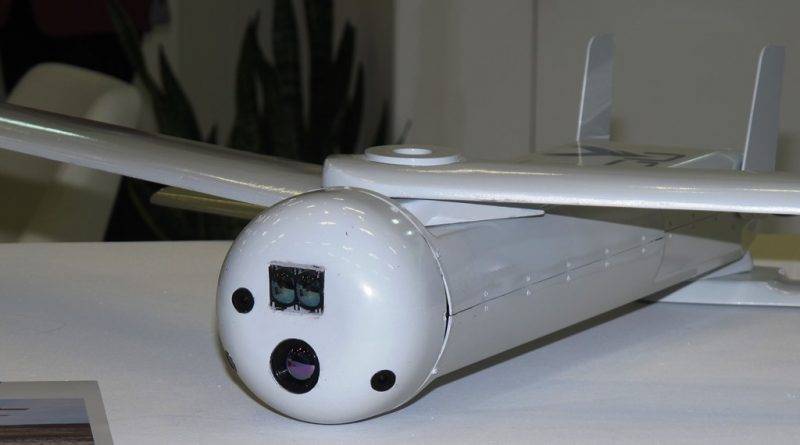
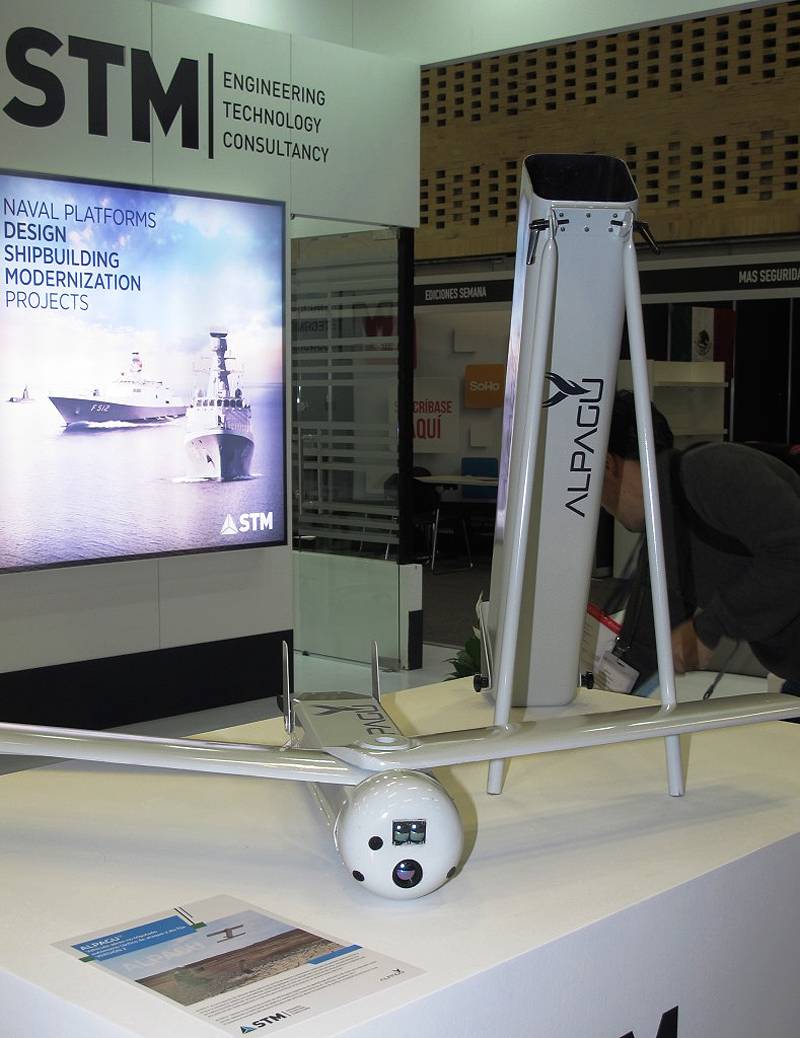
Having vast experience in the field of mini UAVs, the Israeli company Elbit Systems developed and presented its SkyStriker ammunition, which is structurally a traditional glider with extended wings, at the air show in Paris. With a maximum take-off weight of 40 kg and a range of 40 km, he can take the combat load of 5 or 10 kg and then the flight duration is two or an hour, respectively. The cumulative-fragmentation warhead fuse operates in a delay mode. The aerodynamic characteristics are quite different from the characteristics of the Skylark UAVs, since SkyStriker needs to barrage at low speed and dive at maximum speed. However, Elbit Systems borrowed some components from the UAV, for example, the data transmission channel and the catapult. During the flight, the warhead is not cocked, the operator puts it in a combat position when ready for an attack. However, a full cocking occurs only when the device, when diving, reaches a certain speed and height, and only after that it becomes an explosive device. This allows you to return the device in case of cancellation of the job; at the same time, a visual indicator shows the search group whether the ammunition is cocked or not, which makes it possible to handle it accordingly.
The Turkish company STM has developed two droneKillers: Aircraft-type Alpagu and Helicopter-type Kargu. The Alpagu model is launched from a square container thanks to a pneumatic device. The main wings and tail of the apparatus are deployed after launch, the electric motor rotates the pusher propeller installed in the tail section. The operator controls the device via a video channel; Alpagu itself is able to detect and classify stationary and moving targets, such as cars and people, thanks to image processing algorithms. Here, STM applied its rich experience in artificial intelligence. The device is equipped with day and night optocoupler cameras. With a wingspan of 1250 mm and a fuselage length of 700 mm, the Alpagu weighs 1,9 kg and can carry 500-600 grams of payload in the form of a MKEK hand grenade; at the same time, it is possible to equip combat units from other manufacturers. The total mass of the system, which can be ready to launch in less than 45 seconds, is 2,9 kg, cruising speed reaches 50 knots, and a maximum speed of 65 knots. The range of the device is 5 km, the flight duration is 10 minutes, the maximum flight altitude is 400 meters, and the optimal operating altitude is 150 meters. When attacking a target, the Alpagu ammunition dives down at maximum speed, thus adding kinetic energy to the explosive effect on the target. The Alpagu munition, which has been significantly reduced in weight from the original prototype, is still being tested and will be ready for deployment in late 2019, according to STM. STM intends to develop a family of loitering munitions based on the Alpagu with increased takeoff weight and payload capacity, as well as a versatile warhead giving maximum operational flexibility.
Kargu helicopter-type ammunition is operated by the Turkish army and special police units. The quadrocopter has a take-off weight of 7,06 kg, its electric motors are powered by lithium-polymer batteries, providing 25 minutes in the air. The maximum ceiling is 2800 meters, and the working height is 500 meters above sea level, the range is 5 km, the maximum speed is 72 km / h, but during an attack the dive speed reaches 120 km / h. A variant of the Kargu Block II was also developed, whose weight was reduced to 5 kg while maintaining the carrying capacity and flight duration. But its most distinctive feature is that it can work in a swarm, fly with more than 20 aircraft, following a flight program loaded before launch and diving independently on a target. STM believes this is the first step towards real swarm operations, the second will be the integration of artificial intelligence in order to reduce the load on the operator, the third final step is to get the device to work without a GPS signal and communication channel. STM has developed a new target load for Kargu, including an anti-personnel / fragmentation warhead weighing 1,3 kg, a thermobaric warhead of the same weight, while armor-piercing is in the final stages of qualification.
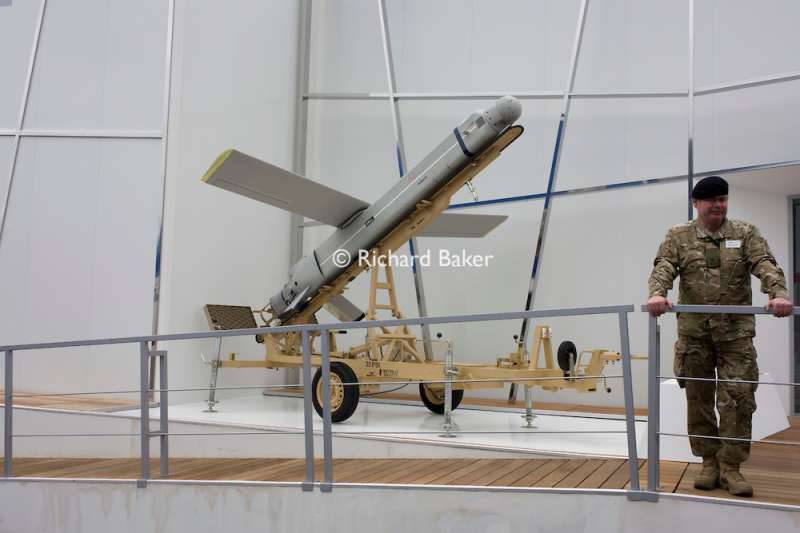
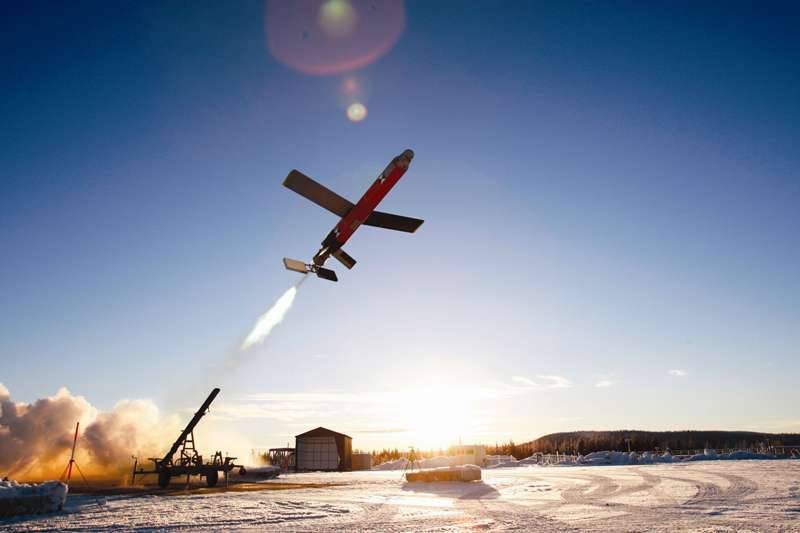
Europe, by and large, is not very active in the field of barrage of ammunition. MBDA launched several programs, the most advanced of which was the Fire Shadow project. The development of the device began in 2007, and the first tests passed in the 2010 year. The flight range is 100 km, the patrol time is 6 hours. The project was intended for the British army and was part of the Indirect Fire Precision Attack (Indirect Fire Precision Attack) program, which was ultimately closed in the middle of 2018.
In Central Europe, things are better. The Polish company WB Group has developed a Warmate ammunition weighing 5,1 kg. A traditional glider with high wings and a V-tail is equipped with a thrust propeller rotating from an electric motor; An on-board battery provides 50 minutes of airborne use. The wingspan of the device is 1590 mm and 1170 mm length, it is launched from a pneumatic catapult and flies at operating altitudes of 100-500 meters, the maximum flight height is 3000 meters, speed varies from 50 to 150 km / h. The coverage area of the encrypted two-way communication channel is 12 km. The device can operate in several modes, for example, after identifying a target, Warmate switches to automatic attack mode, the ammunition is directed at it, bearing a combat load of 1,4 kg, and it strikes a target with a probable circular deviation of 1,5 meter. Three warheads are available: anti-tank GO-1-HEAT, capable of penetrating 120 mm rolled armor, thermobaric GO-1-FAE and high-explosive fragmentation GO-1-HE with a radius of destruction of 10 meters. The Warmate variant is designed for special forces and therefore can be carried by one person, while the much larger Warmate 2 system with a maximum take-off weight of 30 kg is launched from the catapult; the flight duration is 120 minutes and the range is 20 km. The device can be equipped with various warheads: thermobaric and high-explosive fragmentation warheads have a radius of destruction of 40 meters, cumulative is able to penetrate 400 mm rolled armor, the circular deviation for all is 2 meters. The Warmate 2 device was developed jointly with the emirate company Tawazun. This system is installed on the machine together with the ground control station. Poland ordered 1000 Warmate ammunition, the first of which was delivered to special forces in November 2017.
The WB Group also developed the Swarm system, which integrates the Flyeye mini-launch manual drone, used for surveillance and identification, and Warmate ammunition as an executive component. The first batch of Flyeye drones was delivered to the Polish police in December 2018.
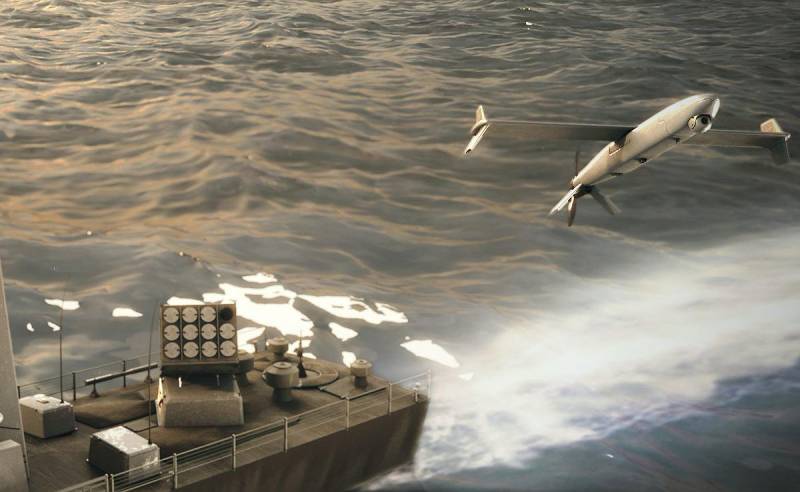
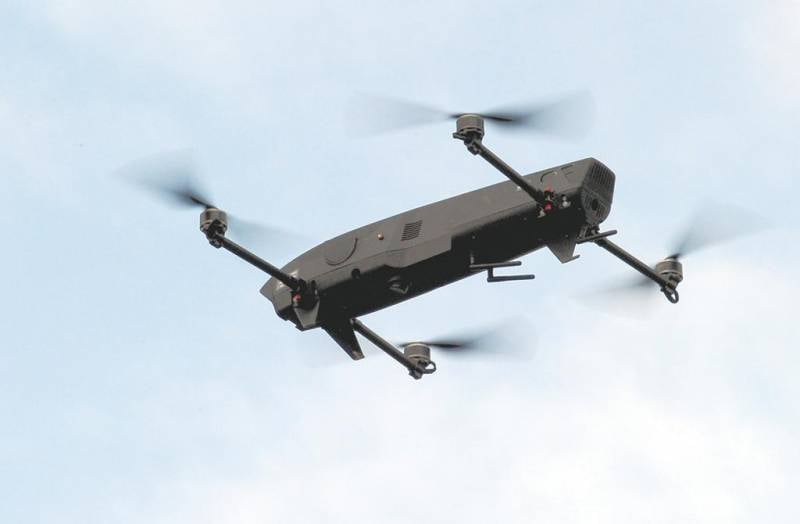
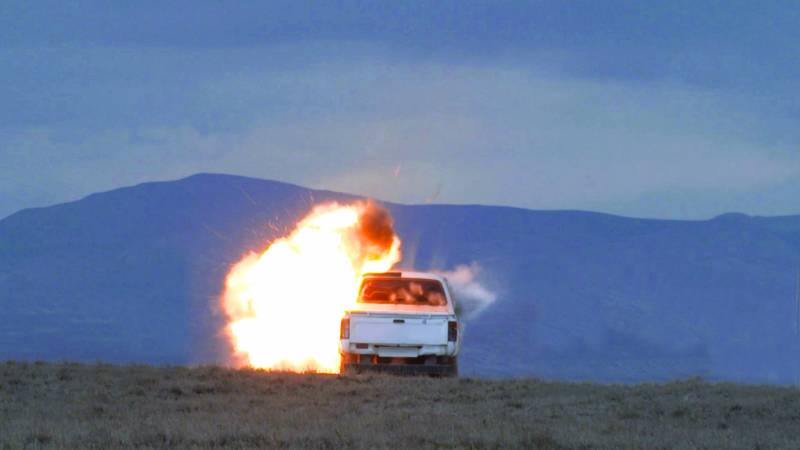
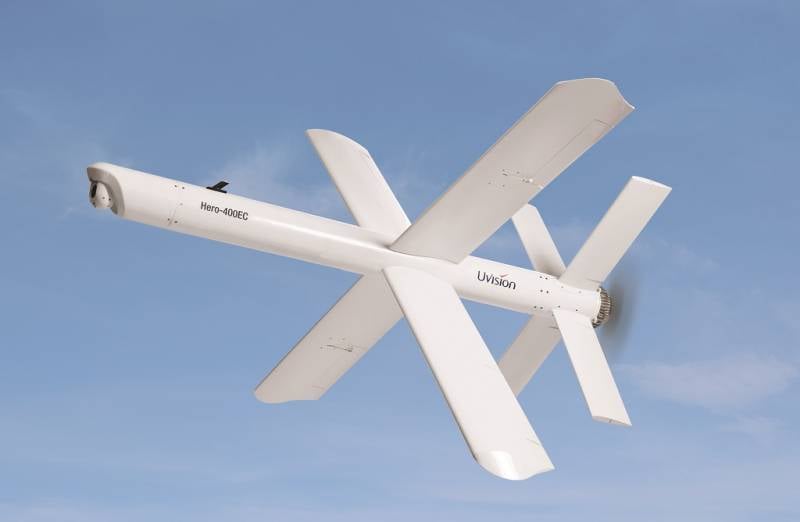
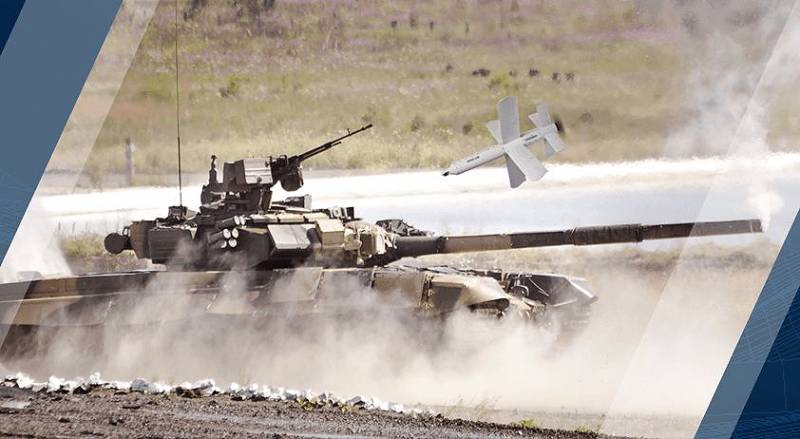
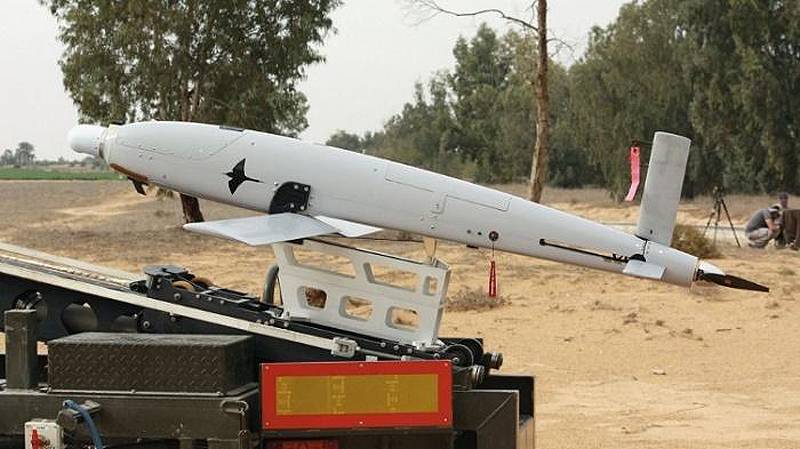
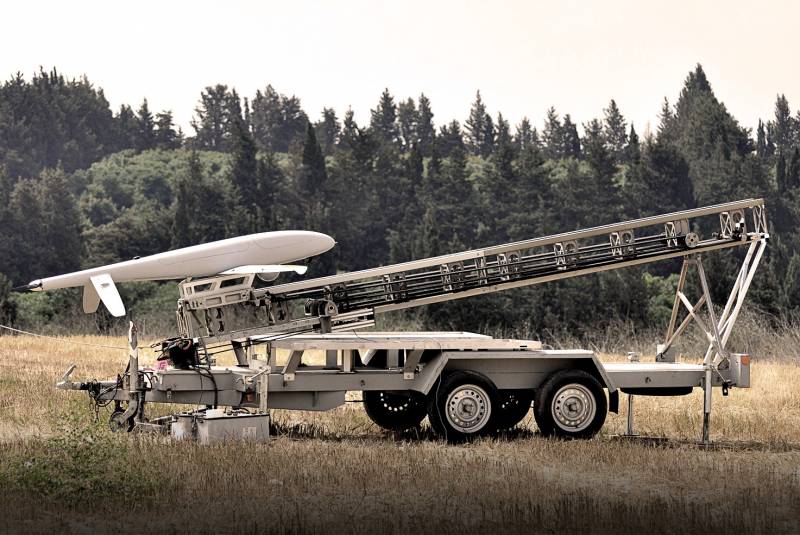
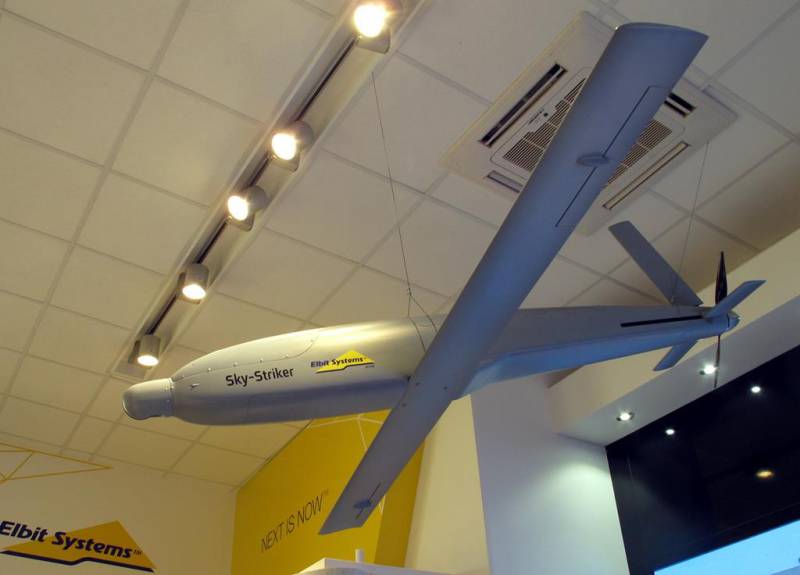
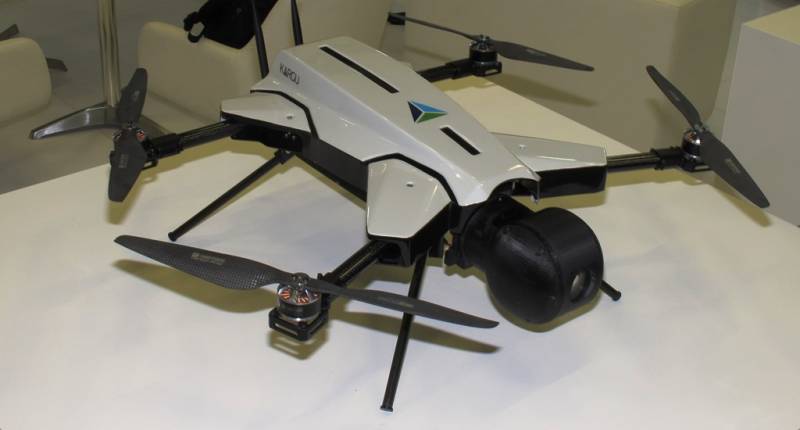
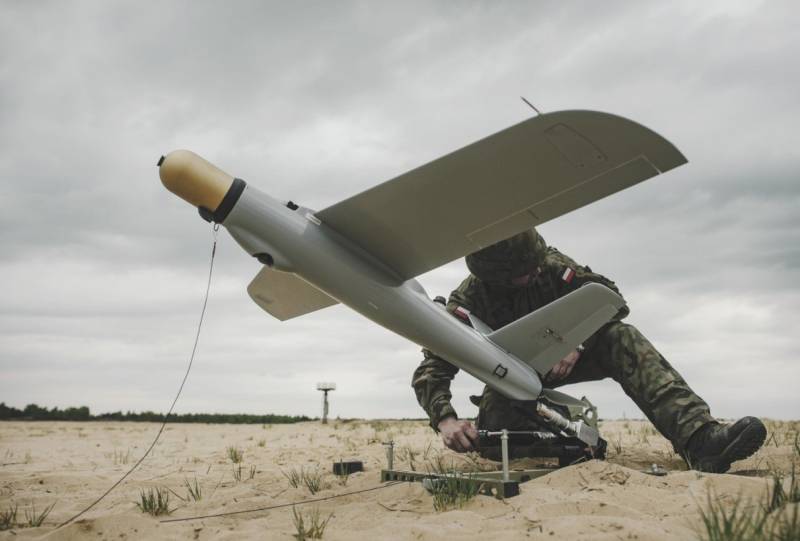
Information